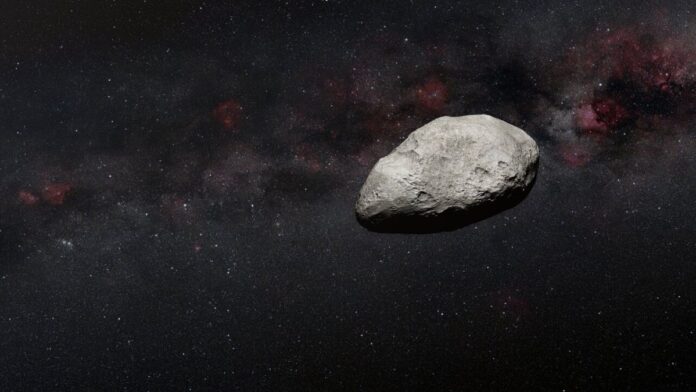The James Webb Space Telescope (JWST) unexpectedly discovered a small asteroid. The space rock is around the size of the Colosseum in Rome and might well be the smallest object that the space telescope has spotted since it was sent into space at the end of 2021.
Though the James Webb Space Telescope has been making waves in astronomy by discovering massive celestial objects sometimes as far away as billions of light-years, the new finding demonstrates the powerful instrument’s unpredicted usefulness much closer to home.
Even more impressively, the team that found the 330- to 660-foot (100 to 200-meter) asteroid did so using data collected to calibrate the Mid-InfraRed Instrument (MIRI) that was never intended to reveal new asteroids.
Related: NASA’s James Webb Space Telescope mission: Live updates
“We — completely unexpectedly — detected a small asteroid in publicly available MIRI calibration observations,” Max Planck Institute for Extraterrestrial Physics astronomer Thomas Müller said in a statement. (opens in new tab) “The measurements are some of the first MIRI measurements targeting the ecliptic plane and our work suggests that many, new objects will be detected with this instrument.”
The main asteroid belt is located between Mars and Jupiter and contains millions of space rocks formed from material leftover from the birth of the solar system over 4.5 billion years ago. These objects range in size from dwarf planets like Ceres, which is around 620 miles (1000 kilometers) wide to fragments less than 33 feet (10 meters) across.
Because they are “fossilized remains” left over from the early solar system, the study of asteroids can provide vital information about the formation of planets like Earth.
This is true for smaller asteroids which have been studied in less detail than their larger main-asteroid belt companions due to the difficulty of observing them. This makes the discovery of a small asteroid by the JWST especially promising as it suggests that in the future astronomers will be able to study asteroids smaller than around half a mile in diameter with the telescope.
The JWST collected the data while looking at the main-belt asteroid (10920) 1998 BC1, which itself was discovered in 1998. This collaboration effort was actually considered a failure by the team, mainly as a result of the brightness of asteroid 10920 1998 BC1 and an offset in the JWST’s direction.
Deciding that the data could instead be used to establish and test a new method of determining an object’s orbit and estimating its size, the team conducted an analysis that revealed the “photo-bombing” asteroid.
The scientists were able to estimate the asteroid’s size, that it was located in the inner region of the main asteroid belt, and found it had a low-inclination orbit.
“Our results show that even ‘failed’ Webb observations can be scientifically useful, if you have the right mindset and a little bit of luck,” Müller continued. “Our detection lies in the main asteroid belt, but the JWST’s incredible sensitivity made it possible to see this roughly 100-meter object at a distance of more than 100 million kilometers [over 62 million miles].”
Astronomers will now further constrain the orbit of the newly detected object using observations against background stars.
“This is a fantastic result which highlights the capabilities of MIRI to serendipitously detect a previously undetectable size of asteroid in the main belt,” JWST support scientist at the Space Telescope Science Institute in Baltimore, Bryan Holler said. “Repeats of these observations are in the process of being scheduled, and we are fully expecting new asteroid interlopers in those images!”
The team’s findings are published in the journal Astronomy & Astrophysics. (opens in new tab)
Follow us @Spacedotcom (opens in new tab), or on Facebook (opens in new tab) and Instagram (opens in new tab).

